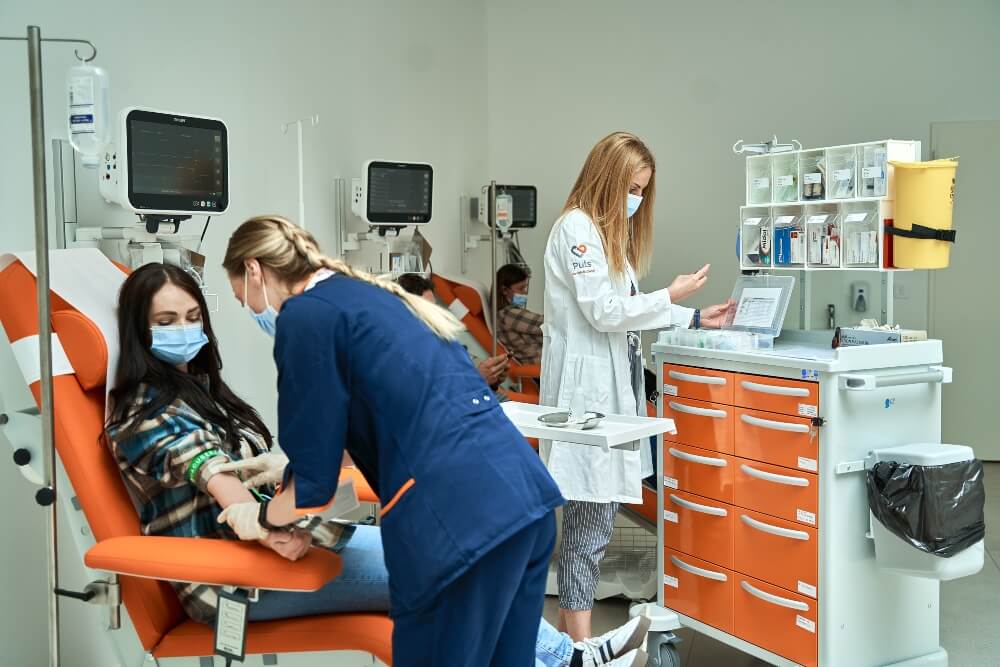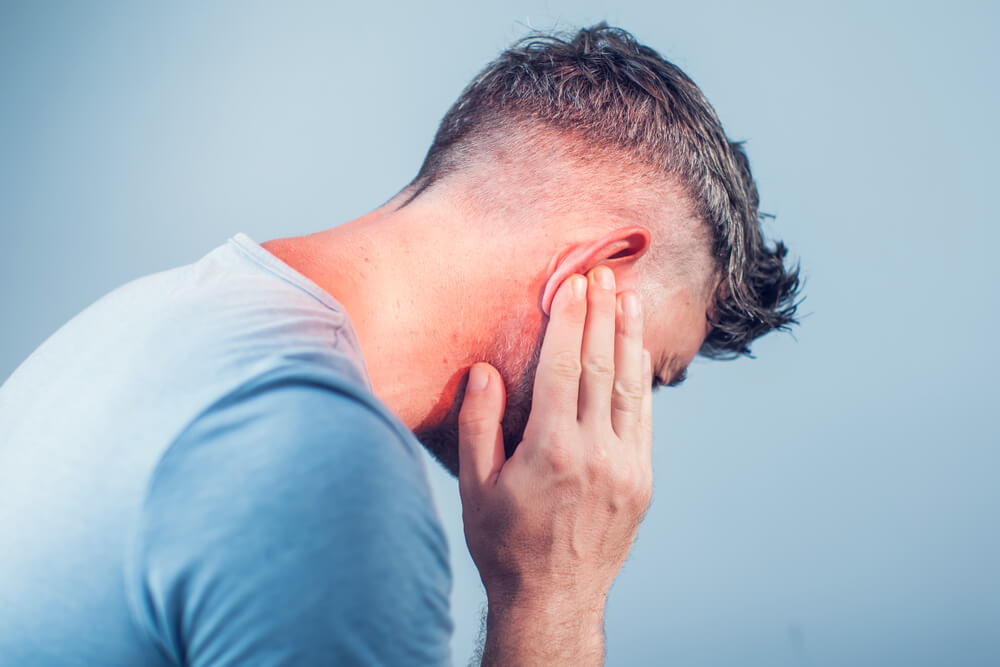At Pulse Cardiology Center, there is a dedicated Headache Center aimed at providing fast diagnosis and treatment for this issue.
What are the symptoms of a headache?
Headache symptoms can vary from person to person. Some patients find it easy to identify the location and nature of their pain, which significantly aids in diagnosis and treatment planning. On the other hand, there are cases where patients struggle to describe how they feel.
Pain is transmitted through nerves, and sometimes it can occur in a location distant from the actual problem. For example, the brain itself is not sensitive to pain, but other structures in the head and neck region (such as muscles, tendons, skin, subcutaneous tissue, teeth, nerves, arteries, middle ear, etc.) are sensitive to pain.
The symptoms most commonly reported by patients with headaches are:
- Pulsating headache
- Dull pain
- Nausea
- Vomiting
- Mood changes
- Dizziness
Are all headaches dangerous?
Not all headaches are dangerous, and not all of them require treatment. If you frequently experience recurring headaches that interfere with your daily activities, it is advisable to consult a doctor to determine whether they are dangerous or not. When this problem occurs suddenly, accompanied by other symptoms such as vomiting, nausea, dizziness, or loss of consciousness, it is important to seek medical attention immediately.
What types of headaches are there?
Headaches can be a problem in themselves or a symptom of another illness or injury.
There are three main types of headaches: primary headaches, secondary or symptomatic headaches, and neuralgia. These problems are often associated with infections, dehydration, low blood sugar levels, anxiety, anemia, vision problems, or the use of certain medications.
What are primary headaches?
This type of headache is not associated with other illnesses, damage, or injuries, and it includes:
- Migraine
This type of headache more commonly affects one side of the head, and rarely both sides at once. The pain is intense and throbbing, typically located in the temples. Along with migraine, symptoms such as dizziness, nausea, vomiting, sensitivity to light or sound, visual disturbances such as seeing spots or other vision problems may occur.
Migraine often starts right after waking up and intensifies during activity. It can last for hours or even days, leaving the person feeling exhausted afterward. Unfortunately, there is no universal cure for migraines, but there are treatments available that can help prevent their occurrence or reduce the intensity of the pain.
A skilled neurologist plays a crucial role in managing migraines, as they can provide tailored advice based on your specific situation. Our team of neurologists at the Headache Center is dedicated to treating patients with headaches. Schedule an appointment with one of them.
- Tension headache
Tension headache is characterized by a squeezing or pressing pain in the head, which sometimes extends to the neck. Patients often describe it as if a band or cap is tightening around their head. The pain is typically mild to moderate in intensity and constant, not increasing during activity. This is the most common type of headache and is associated with stress and the musculoskeletal region of the neck, specifically with issues in this area.
Over 70% of people experience this type of problem for less than 15 days per month, while a small percentage may have it for more than 15 days, significantly impacting the patient’s quality of life and daily activities.
- Trigeminal autonomic cephalalgias
These headaches occur on one side of the head, specifically in the trigeminal area. The duration of this pain is short, and it is often accompanied by tearing from the eye, drooping eyelid, and nasal congestion.
Trigeminal autonomic cephalalgias include:
- Cluster headaches (among all trigeminal autonomic cephalalgias, cluster headaches are the most common. The pain is located behind the eye on one side and is usually of short duration. However, when they last longer, they can be quite unpleasant and interfere with daily activities).
- Paroxysmal hemicrania
- Short-lasting unilateral neuralgiform headache attacks
- Hemicrania continua
- Probable trigeminal autonomic cephalalgia (TAC)
What are secondary or symptomatic headaches?
Secondary or symptomatic headaches are associated with other conditions, diseases, or injuries, and they include:
- Occipital headache
- External compression headache
- Post-traumatic headache
- Apnea headache
- Idiopathic headache
- Headache due to trauma
- Headache due to infection
- Headache due to concussion
- Headache due to substance use
Some secondary types of headaches are not dangerous, but others are a sign that you should urgently see a doctor. It is important to know that a headache can be a signal that an aneurysm has ruptured. Aneurysms are balloon-like bulges in the brain’s blood vessels, and most people are unaware they have this condition because it often doesn’t present symptoms until it ruptures. After an aneurysm rupture, sudden headache, dizziness, blurred vision, vomiting, and even seizures, light sensitivity, drooping eyelid, and confusion may occur.
If you recognize these symptoms in yourself or someone else, it is essential to react promptly by calling emergency medical services. In cases of external head injuries, headaches and dizziness are often absent, while they become the main symptoms of internal injuries. After a concussion, headaches, anxiety, noise sensitivity, poor concentration, light sensitivity, and overall irritability can persist for some time. Such a headache resembles tension or migraine headaches.
What are neuralgias?
Neuralgias involve intense pain that arises from nerve damage or irritation. Often, the diagnosis process can be lengthy and may initially lead patients to consult a dentist. A neurologist is the only one who can accurately confirm the nature of pain in this part of the body, making them one of the first doctors you should seek.
There are several types of neuralgias:
- Occipital neuralgia: It causes pain in the occipital nerves located at the base of the skull, which can radiate through the scalp and reach behind the eye. Tension in the neck muscles, sudden head movements, as well as more serious causes like tumors, infections, gout, inflammation of blood vessels, diabetes, and physical injuries to the neck, can trigger this neuralgia.
- Glossopharyngeal neuralgia: This type is associated with issues involving the ninth or tenth cranial nerve and is relatively rare. The pain usually occurs in the area of the jaw and middle ear.
- Sphenopalatine neuralgia: The pain starts in the region of the bottom of the nose and spreads to the cheek, eye, and teeth, typically on one side. Patients have reported experiencing a metallic taste in their mouth during attacks.
- Combined hyperactive dysfunction syndrome: It involves pain resulting from issues with the fifth, seventh, and ninth cranial nerves simultaneously.
The symptoms of neuralgias can vary widely. The pain can be extremely intense, sudden, pulsating in the affected nerve area, and may be accompanied by tingling or a burning sensation.
Diagnosing the cause of a headache

Headaches can be a problem in and of themselves, but they can also be a symptom. In both cases, there are numerous reasons for their occurrence, making diagnosis sometimes challenging and time-consuming.
To avoid any delays in reaching a diagnosis, come to us! Our team of neurologists has designed examination packages to help you quickly discover what’s happening in your body and how to treat your headaches.
We offer the following packages: Neurological Package 1 (neurologist consultation, Doppler ultrasound of neck blood vessels), Neurological Package 2 (neurologist consultation, Doppler ultrasound of neck blood vessels, Transcranial Doppler), Headache Package (neurologist consultation, Doppler ultrasound of neck blood vessels, Transcranial Doppler, cardiologist consultation, laboratory tests, CT scan of the head).
How are headaches treated?
The treatment of headaches depends on the type of problem. Primary headaches can be treated with medication, physical therapy, electrostimulation, and psychotherapy. Secondary headaches will depend entirely on the underlying problem, as headaches can be a symptom of infections, tumors, injuries, etc.
Headaches that recur regardless of their intensity and whether they are associated with a serious condition significantly impact a person’s mental and physical health. Therefore, it is important to identify the underlying cause and do everything in your power, as well as with the help of medical professionals, to prevent experiencing those moments again. The longer they last, the more challenging daily activities become for the patient.
To avoid discomfort, take action in a timely manner. Call us, and we will help you live a pain-free life.






